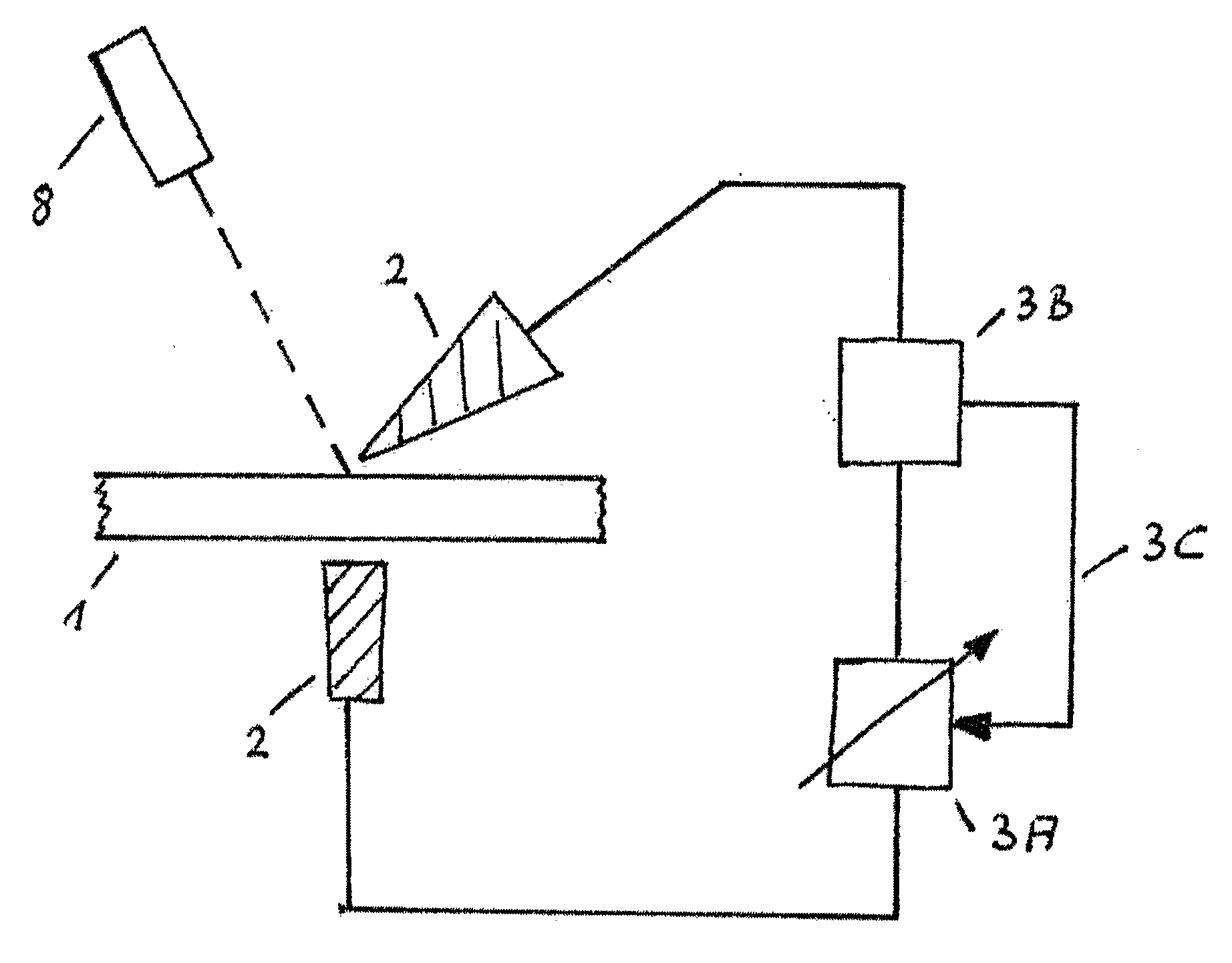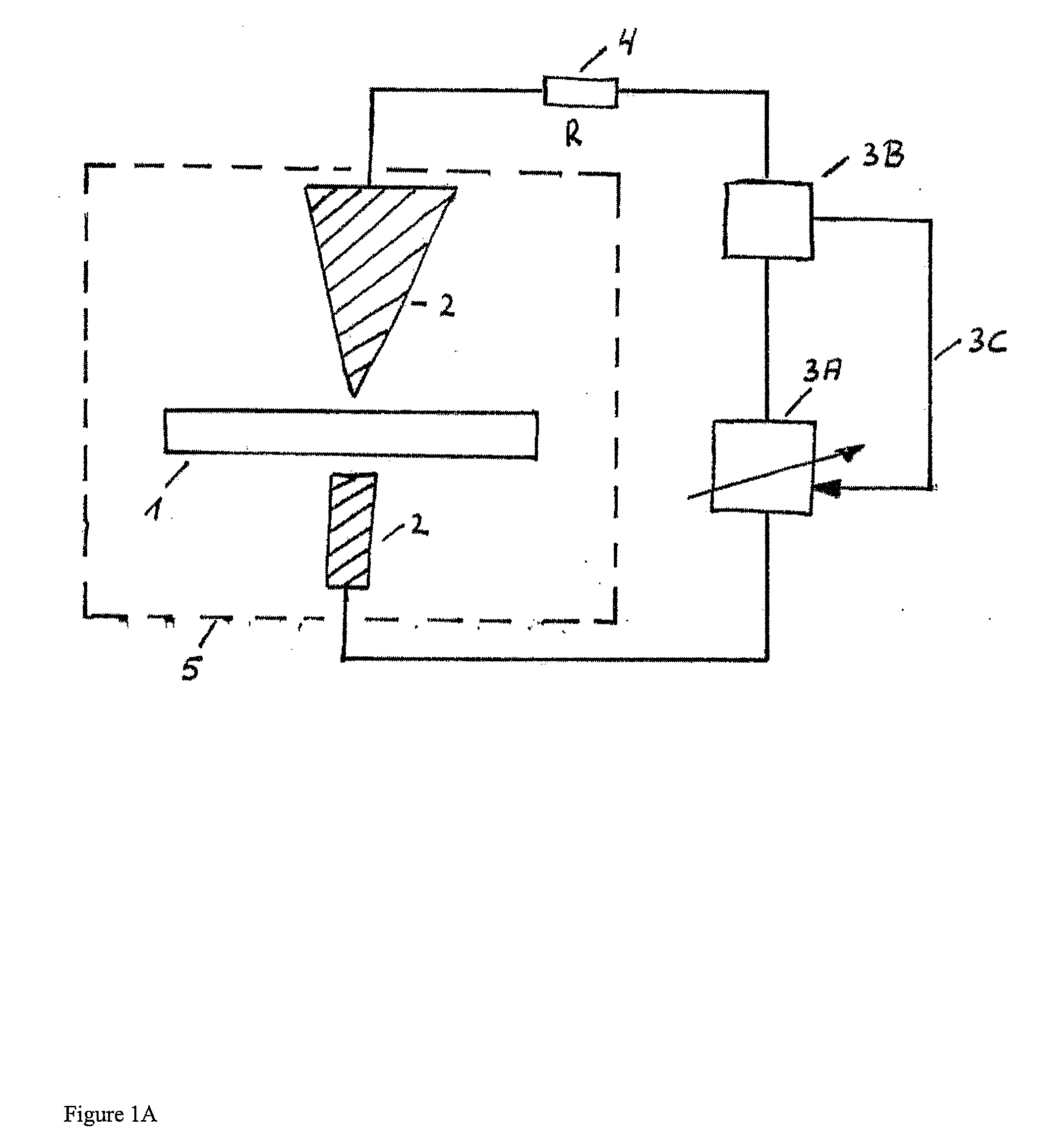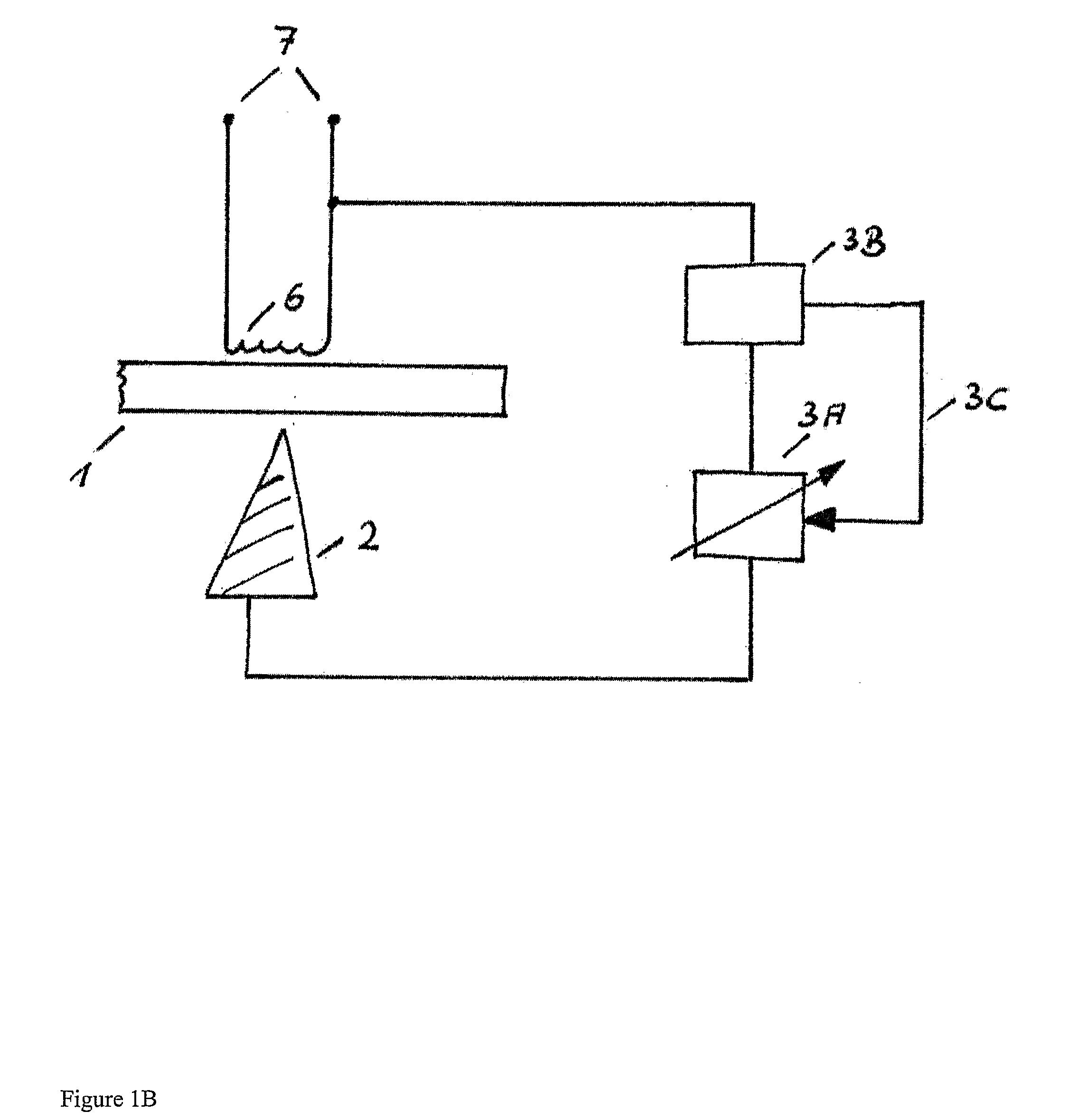Manufacturing and Use of Microperforated Substrates
a micro-perforated substrate and manufacturing technology, applied in the field of micro-perforated substrates, can solve the problems of inability to reproduce substrates with holes, and inability to produce high-quality membrane carriers. , to achieve the effect of reducing the resistance of electrical substrates, reducing the number of holes, and improving the quality of the substra
- Summary
- Abstract
- Description
- Claims
- Application Information
AI Technical Summary
Benefits of technology
Problems solved by technology
Method used
Image
Examples
Embodiment Construction
[0109]The device and methods of this invention can be used for the formation of hole and channel like structures in insulating substrates, in particular useful for electrophysiological and other measurements and set-ups where independent access to parts of biological membranes and cells is required. The terms “carrier” and “substrate” will be used synonymously and interchangeably throughout this patent application, with the term substrate referring more to the actual material to be micromachined and the term carrier indicating its actual function.
[0110]The formation of high aspect ratio hole (i.e. ‘tunnel’ or ‘channel’ like) structures in insulating or semiconducting substrates with current micromachining tools such as reactive ion etching or laser ablation is difficult, expensive and in most cases limited by size and geometry. However, for hole structures in insulating carriers used for the independent access of membrane parts, as e.g. patch clamp on a chip or BLM measurements, the...
PUM
| Property | Measurement | Unit |
|---|---|---|
| electrical current | aaaaa | aaaaa |
| voltage | aaaaa | aaaaa |
| frequency | aaaaa | aaaaa |
Abstract
Description
Claims
Application Information
 Login to View More
Login to View More - R&D
- Intellectual Property
- Life Sciences
- Materials
- Tech Scout
- Unparalleled Data Quality
- Higher Quality Content
- 60% Fewer Hallucinations
Browse by: Latest US Patents, China's latest patents, Technical Efficacy Thesaurus, Application Domain, Technology Topic, Popular Technical Reports.
© 2025 PatSnap. All rights reserved.Legal|Privacy policy|Modern Slavery Act Transparency Statement|Sitemap|About US| Contact US: help@patsnap.com



